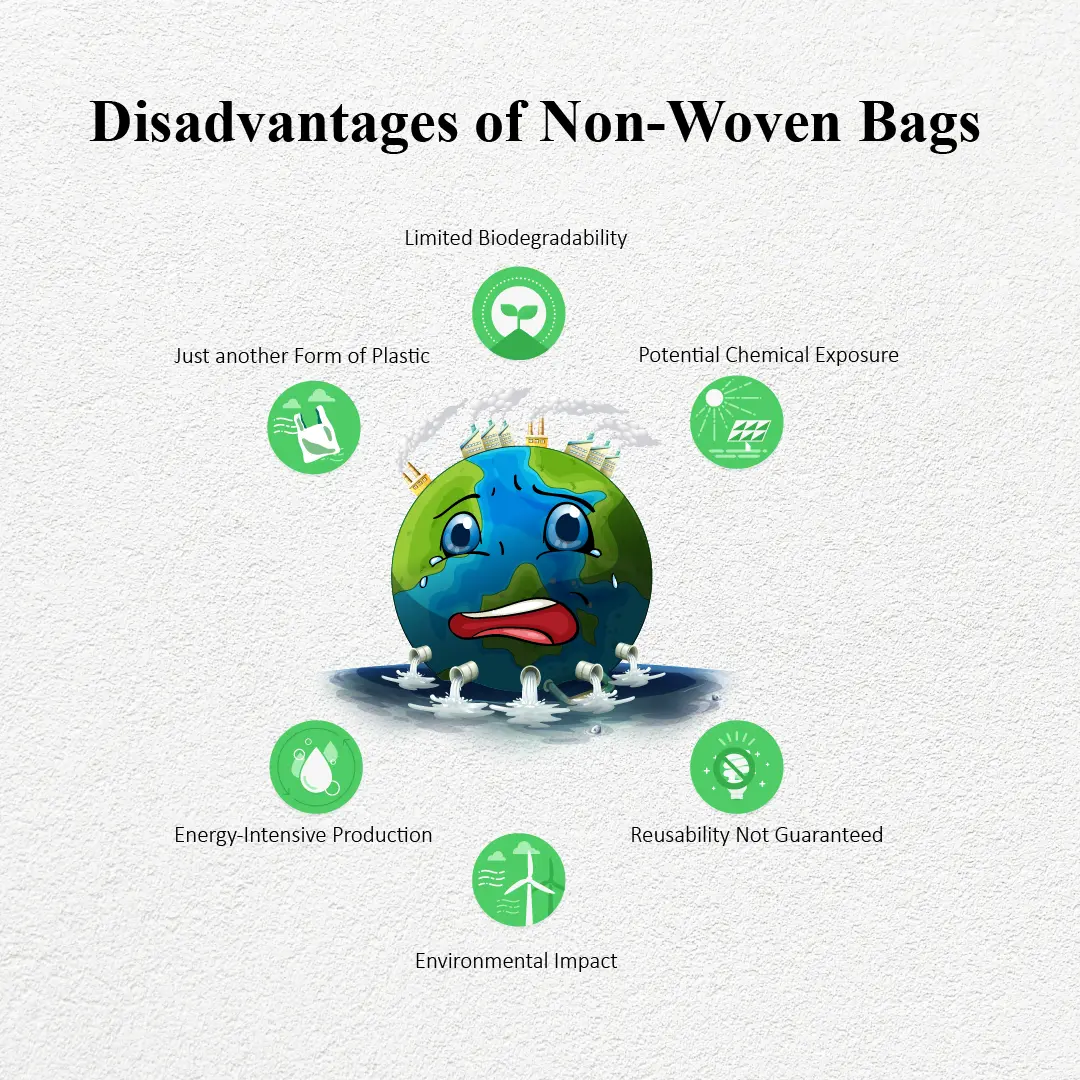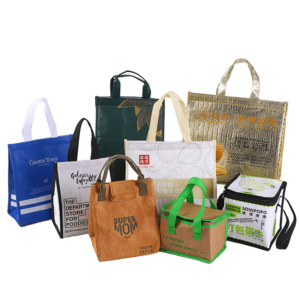
Non-woven bags have become increasingly popular in recent years, but are they truly eco-friendly? Let’s explore the environmental impact of these bags.
Non-woven bags are made from synthetic fibers and often touted as eco-friendly. However, their production, use, and disposal raise important environmental concerns.
Are you concerned about the environmental footprint of non-woven bags? Read on to discover whether they live up to their eco-friendly claims.
Is a Non-Woven Bag Eco-Friendly?
Non-woven bags are often marketed as an environmentally friendly alternative to plastic bags. But are they really eco-friendly?
Non-woven bags are made from polypropylene, which is a plastic material. They are biodegradable in some conditions, but their production and disposal can harm the environment non-woven bags biodegradability[1^].

Non-woven bags are made from polypropylene, a type of plastic. This material is durable, lightweight, and versatile. However, while polypropylene is technically recyclable, the infrastructure for recycling non-woven bags is limited polypropylene recycling infrastructure[2^]. This means that many non-woven bags end up in landfills, where they can take years to break down. Although non-woven bags are promoted as a more sustainable option compared to traditional plastic bags, they still come with a significant environmental impact.
Environmental Impact of Production
The production process of non-woven bags is energy-intensive and involves the use of fossil fuels fossil fuel use in polypropylene production[3^]. Additionally, the manufacturing of polypropylene contributes to carbon emissions, which worsen climate change. On the positive side, non-woven bags are often made from recycled materials, reducing the demand for virgin plastic. But the environmental impact of their production is still far from negligible.
Disposal and Recycling While non-woven bags can theoretically be recycled, the reality is that they often are not recycling rates for non-woven bags[4^]. The recycling rate for non-woven bags is low due to their specialized material, and many facilities do not accept them. This results in most bags being sent to landfills or incinerators, further contributing to environmental pollution.
How Do Non-Woven Bags Affect the Environment?
Non-woven bags can impact the environment in several ways. Let's take a deeper look at their overall environmental footprint.
Non-woven bags affect the environment mainly through their production, low recycling rate, and the accumulation of plastic waste in landfills non-woven bags environmental impact[5^]

While non-woven bags are often seen as a more sustainable alternative to plastic bags, their environmental impact is not insignificant. The key environmental issues include the energy consumption during production, the low recyclability of the material, and the persistence of non-woven bags in landfills. Let's break down these effects in more detail:
Production and Energy Consumption
The manufacturing of non-woven bags involves significant energy input energy consumption in polypropylene production[6^]. The polypropylene used in these bags is derived from petroleum, a non-renewable resource. The extraction and refining of petroleum require large amounts of energy, contributing to greenhouse gas emissions. The process of creating non-woven fabric also involves a combination of mechanical and thermal bonding, which consumes additional energy.
Disposal and Landfill Waste
One of the most significant environmental concerns with non-woven bags is their disposal non-woven bag landfill impact[7^]. Most non-woven bags are not biodegradable and take decades to decompose in landfills. As they break down, they release harmful chemicals into the soil and water, posing long-term risks to ecosystems. Despite being marketed as reusable, non-woven bags often end up as waste after a relatively short period of use.
Limited Recycling
Recycling non-woven bags is challenging due to the type of plastic used and the bag’s structure recycling challenges for non-woven bags[8^]. While polypropylene itself is recyclable, non-woven bags are often contaminated with dirt, food particles, or other residues, making recycling even harder. Many recycling centers do not accept these bags, leading to further waste accumulation.
What Are the Disadvantages of Non-Woven Fabric?
Despite their initial appeal, non-woven bags have several drawbacks that can make them less environmentally friendly than they seem.
Non-woven fabric has various disadvantages, including its environmental impact, limited recyclability, and short lifespan.

While non-woven fabric is often marketed as a green alternative to plastic, it comes with several disadvantages that may make you think twice before using it. Below are the key drawbacks of non-woven fabric:
Durability Issues
Non-woven fabric is not as durable as other materials like cotton or polyester. While it may last longer than traditional plastic bags, its lifespan is still limited. After repeated use, the material begins to degrade, and the bags are often discarded prematurely. This leads to an increased frequency of replacement, which results in more waste over time.
Limited Reusability
One of the main selling points of non-woven bags is their reusability. However, in practice, many consumers do not reuse these bags as much as intended. They are often used for single purposes, like grocery shopping, and then discarded. This short-lived use contributes to the waste problem.
Non-Biodegradability
Non-woven bags are made from synthetic fibers that do not biodegrade naturally. When they are disposed of in landfills, they remain there for many years. Unlike paper bags, which decompose relatively quickly, non-woven bags can take decades to break down.
What Are the Most Environmentally Friendly Bags?
With concerns about non-woven bags, what are the most environmentally friendly alternatives available?
While non-woven bags have their drawbacks, there are several eco-friendly alternatives, including cloth bags, paper bags, and reusable jute or hemp bags.

If you are looking for more environmentally friendly options, here are some bags that have a much smaller environmental footprint compared to non-woven bags:
Cloth Bags
Cloth bags, especially those made from organic cotton, are highly durable and can be reused countless times. These bags are biodegradable and have a much lower environmental impact than non-woven bags when disposed of properly. However, they do require more resources to produce, such as water and energy, so their true environmental benefit is realized when they are used multiple times.
Paper Bags
Paper bags are biodegradable and can be recycled. However, they require a significant amount of energy and water to produce. The environmental impact of paper bags is much lower when compared to non-woven bags, especially if they are reused several times. In addition, paper bags are often seen as a more eco-friendly option due to their ability to break down quickly.
Jute or Hemp Bags
Jute and hemp bags are made from natural fibers and are biodegradable. These bags are strong, reusable, and sustainable, making them a great eco-friendly alternative to non-woven bags. They do not require harmful chemicals for production and can be composted at the end of their lifecycle.
Conclusion
Non-woven bags are not as eco-friendly as they may seem. While they offer some benefits, their environmental impact is significant due to production processes and disposal issues.
If you need high-quality Non woven bags for your business, feel free to visit our website at https://zjjrpackaging.com/ to learn more about our products and how we can meet your specific packaging needs.
[1^]:Explains how non-woven bags degrade and the specific environmental conditions required
[2^]:Provides insight into the challenges and availability of recycling facilities for non-woven bags
[3^]:Details the energy consumption and carbon footprint associated with producing polypropylene.
[4^]:Offers statistics and insights on the low recycling rates for non-woven bags.
[5^]:Provides an overview of how non-woven bags affect the environment.
[6^]:Explains the energy-intensive processes involved in making polypropylene.
[7^]:Details the decomposition timeline and environmental effects of non-woven bags in landfills.
[8^]:Explains the difficulties in recycling non-woven bags due to contamination and structure.









